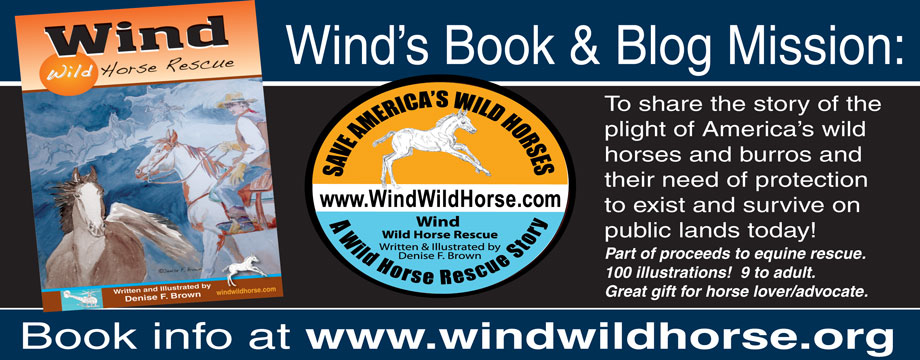Tell BLM: Protect Nevada Wild Horses and Burros!
http://act.wildhorsepreservation.org/p/dia/action3/common/public/?action_KEY=20050
Photo of Wassuk wild horses | BLM
Please Take a Stand: Comments Due by April 27, 2015
The Bureau of Land Management’s draft Resource Management Plan (RMP) for the Carson City District Office will affect wild horses and burros living in 17 Herd Management Areas on over 1.3 million acres.
The RMP will set land use policy in the area for the next 10-20 years. At this stage of the planning process, the BLM is seeking public input on the draft RMP, which would authorize a number of actions and policies that would harm wild horses, including:
- Zeroing out (eliminating all wild horses) from 6 HMAs, which would become Herd Areas where livestock grazing would continue (see below for specifics);
- Possible use of dangerous population control techniques including permanent sterilization and sex ratio skewing;
- Continued use of removals as “management.”
The RMP process presents an opportunity to encourage the BLM to set higher, more equitable “Allowable” Management Levels and to implement humane, on-the-range management that includes the highest possible protective measures for the wild horses and burros that live in these areas. Please take a moment to speak up for these horses and burros by submitting comments below.
Subject: Carson City RMP Public Comment
Colleen Sievers
SAMPLE LETTER TO SEND:
As a citizen concerned about the management of our public lands and wild horses and burros in this area, I urge you to accept and give serious consideration to the following comments on the Bureau of Land Management’s (BLM’s) Draft Carson City District Office Resource Management Plan (RMP) and Environmental Impact Statement (EIS).
The RMP must prohibit the following management practices and strategies:
o zeroing out of any Herd Management Areas where horses or burros currently live.
In 1971 Congress unanimously voted in support of the Wild Free-Roaming Wild Horses and Burros Act and intended that the designated Herd Areas provide wild horse and burro habitat. Yet over the years, the BLM has steadily eliminated designated wild horse/burro habitat from their use. The BLM must STOP this trend and the Carson City District must alter its RMP Preferred Alternative which continues to eliminate wild horse habitat.
If a zeroing out is based on the absence of water, the elimination of that Congressionally-designated wild horse habitat should be replaced by repatriating wild horses to Herd Areas that were previously zeroed out.
o permanent sterilization (I oppose permanent sterilization because most methods affect hormonal changes which would alter natural wild horse behaviors, sterilizing males does not reduce reproduction rates, and permanent sterilization eliminates the option for horses to contribute to the gene pool which a risky and dangerous management approach that threatens the long-term health of the horses and herds);
o sex ratio skewing (I oppose skewing the sex ration of horse/burro populations because it negatively impacts natural wild horse/burro behaviors and causes increased aggression for males competing for females, etc)
The preferred/designated alternative in the final RMP should incorporate the following:
o Minimize and prevent the removals of horses and burros except in verifiable emergency situations.
o Increase “Allowable” Management Levels (AMLs) to maintain genetic diversity, prevent inbreeding and make the BLM allocation of AUMs more equitable for wild horses and/or burros compared to private livestock .
o Utilize PZP fertility control at a sufficient scale to control population levels, once they reach larger and genetically sustainable numbers. This humane on-the-range management must replace the practice of removing horses from the range.
o Prohibit permanent sterilization of wild horses and/or burros and prohibit the permanent sterilization of any herds or portions of herds as this is incompatible with the RMP’s requirement to “Maintain the free-roaming behavior of the herds.”
o Prohibit sex-ratio skewing (artificially manipulating populations to achieve 60-40 or higher male/female ratios) because it interferes with the natural behavior of the herds by creating more aggression on the range.
o Relocate wild horses and burros found outside the Herd Management Areas (HMAs) back into their designated ranges and implement measures to address conditions that may cause horses and/or burros to leave the HMAs (see next point).
o Develop on-the-range management strategies to prevent horses and burros from leaving designated ranges and to facilitate their appropriate usage of the HMAs. Such strategies shall include water developments/restoration, fencing removal (or construction in limited necessary cases), additional wildlife crossings or underpasses in areas where highways are limiting full access to the range and other measures.
o Emphasize the need to maintain and enhance burros populations in the planning area due to the small number of burros remaining in the U.S.
o Repatriate wild horses to the mid-to-southern area of the Pine Nut Mountains Herd Area. This Herd Area territory was designated for wild horse and burro use in 1971 but later closed as habitat. Wild horses have always lived in this area and it should be restored to Herd Management Area for wild horses.
Sincerely,

